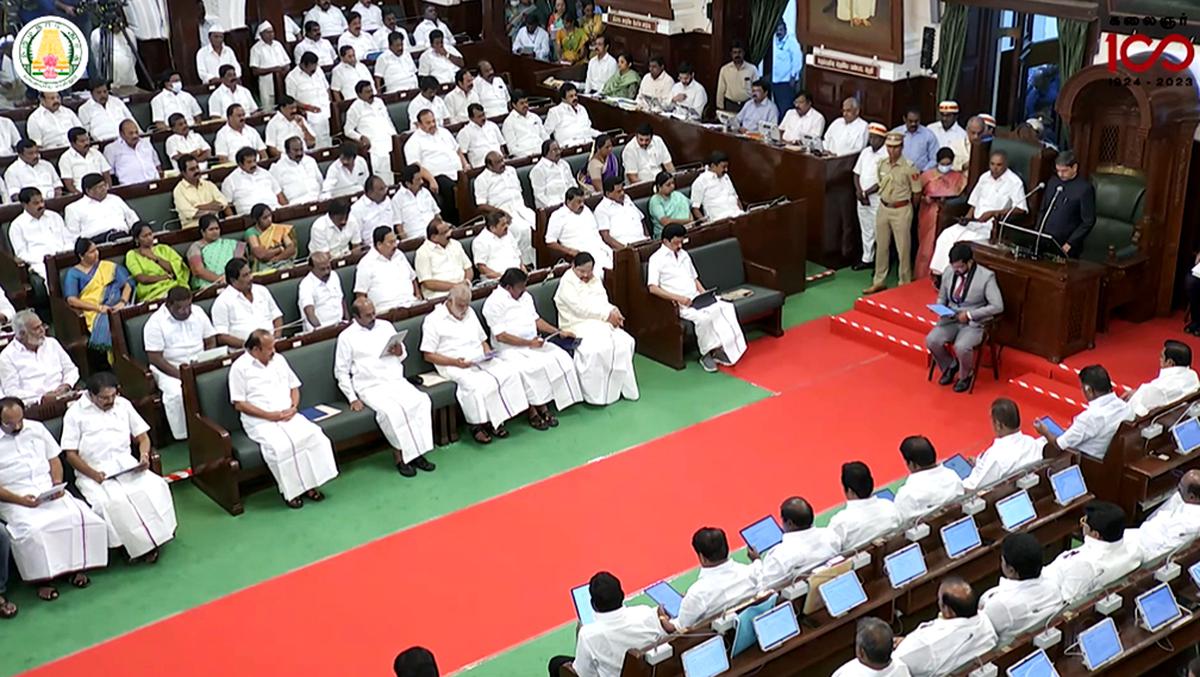Introduction
In the vibrant fabric of India's political landscape, the addresses delivered by the President of India and Governors to Parliament and Legislative Assemblies respectively hold a significant place. These ceremonial occasions, steeped in tradition and ritual, serve as a hallmark of the country's largely unquestioned customs. As the President and Governors arrive amidst fanfare, presided over by the Speaker or Chairman, they partake in a meticulously orchestrated ceremony, reading out speeches drafted by the incumbent government. However, these addresses, while integral to the functioning of the polity, often face scrutiny for their length and content, prompting reflections on potential reforms.
Former President R. Venkataraman's approach to these addresses sheds light on the intricacies involved. With meticulous attention to detail, Venkataraman scrutinized each draft, advocating for modifications where necessary. His quest for brevity, inspired by the succinctness of British counterparts' speeches, aimed at saving time and minimizing tedium during parliamentary sessions. Despite his efforts, however, the adoption of such reforms faced resistance, highlighting the entrenched nature of existing practices within Indian governance. Nevertheless, Venkataraman's endeavor underscores the need for streamlined, effective communication between the Head of State and the legislature, setting a precedent for future deliberations on reforming these customary ceremonies.
Governors' Addresses: A Delicate Balancing Act
Transitioning from the national stage to the state level, the role of Governors in delivering addresses to Legislative Assemblies adds another layer of complexity to India's political landscape. Drawing from personal experiences, former Governors recount instances of meticulous scrutiny and occasional missteps in the drafting and delivery of these addresses. From Kolkata to Bihar, the Governors' interactions with Chief Ministers and Legislative Assemblies offer insights into the dynamics at play within these ceremonial rituals.
In West Bengal, suggestions for modifications to draft addresses were met with receptivity from Chief Minister Buddhadeb Bhattacharjee, exemplifying a spirit of cooperation and mutual respect. However, logistical challenges, such as last-minute changes requiring overnight amendments to printed copies, underscore the intricacies involved in orchestrating these events. Similarly, in Bihar, the seamless delivery of a Governor's address, devoid of interruptions, highlighted the importance of effective communication between state actors. These anecdotes shed light on the delicate balancing act governors must perform, navigating between protocol, political sensitivities, and the imperatives of effective governance.
Challenges and Controversies: Navigating the Political Landscape
As India's political landscape evolves, the ceremonial rituals surrounding Presidential and Governor addresses face mounting scrutiny and controversy. At the heart of these challenges lies a fundamental dichotomy between those who draft these speeches and those tasked with delivering them. The recent surge in controversies surrounding Governors' addresses underscores the need for a nuanced approach to address underlying tensions and ensure the dignity of state institutions remains intact.
The emergence of political polarization between the Center and the States further complicates matters, necessitating innovative solutions to bridge the divide. Proposals, such as President Venkataraman's advocacy for succinct addresses outlining legislative agendas, offer a potential path forward. By shifting the focus from ceremonial formalities to substantive legislative business, policymakers can enhance the efficiency and effectiveness of these customary ceremonies. However, achieving consensus on such reforms will require political will and a willingness to relinquish entrenched practices in favor of more streamlined governance mechanisms.
The Way Forward: Embracing Innovation for Effective Governance
As India grapples with the challenges of modern governance, the need for innovative reforms in ceremonial rituals becomes increasingly apparent. While tradition and protocol have their place in the fabric of Indian democracy, they must adapt to meet the evolving needs of a dynamic society. Embracing President Venkataraman's vision of succinct addresses and prioritizing substantive legislative debates over ceremonial formalities can pave the way for a more responsive and accountable governance framework.
Moreover, fostering a spirit of cooperation and mutual respect between state actors is essential in navigating the complexities of India's federal structure. By transcending political divides and prioritizing the common good, policymakers can chart a course towards a more inclusive and effective governance paradigm. As India marches forward into the 21st century, it must draw upon its rich fabric of traditions while embracing innovation and reform to meet the aspirations of its citizens.
|
Probable Questions for UPSC Mains Exam Discuss the significance of Presidential and Governor addresses in the Indian political landscape, highlighting the ceremonial rituals associated with these events. Analyze the challenges faced in reforming these customary practices and propose innovative solutions to enhance their effectiveness in contemporary governance. (10 marks, 150 words) Examine the role of ceremonial addresses delivered by the President of India and Governors in shaping the discourse within legislative assemblies. Evaluate the impact of political polarization on these addresses, and suggest measures to foster cooperation and mutual respect among state actors for a more inclusive and effective governance framework. (15 marks, 250 words) |
Source – The Hindu







